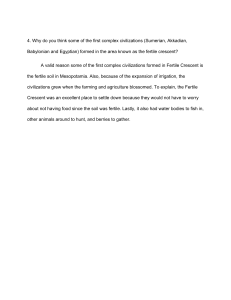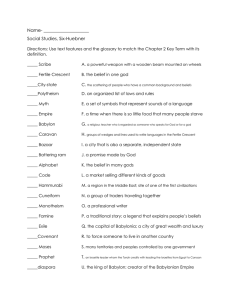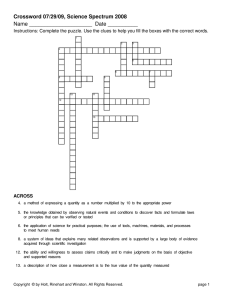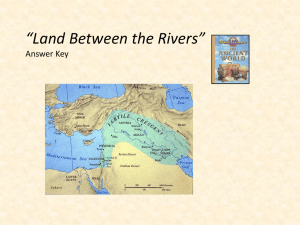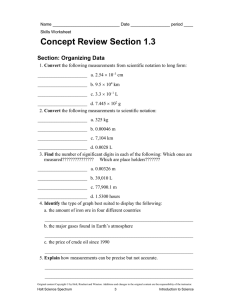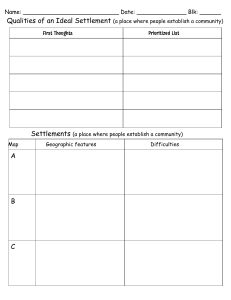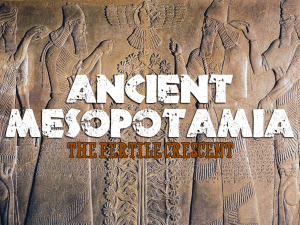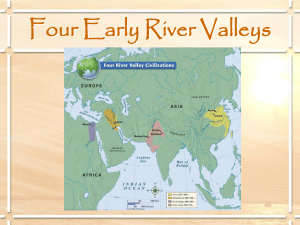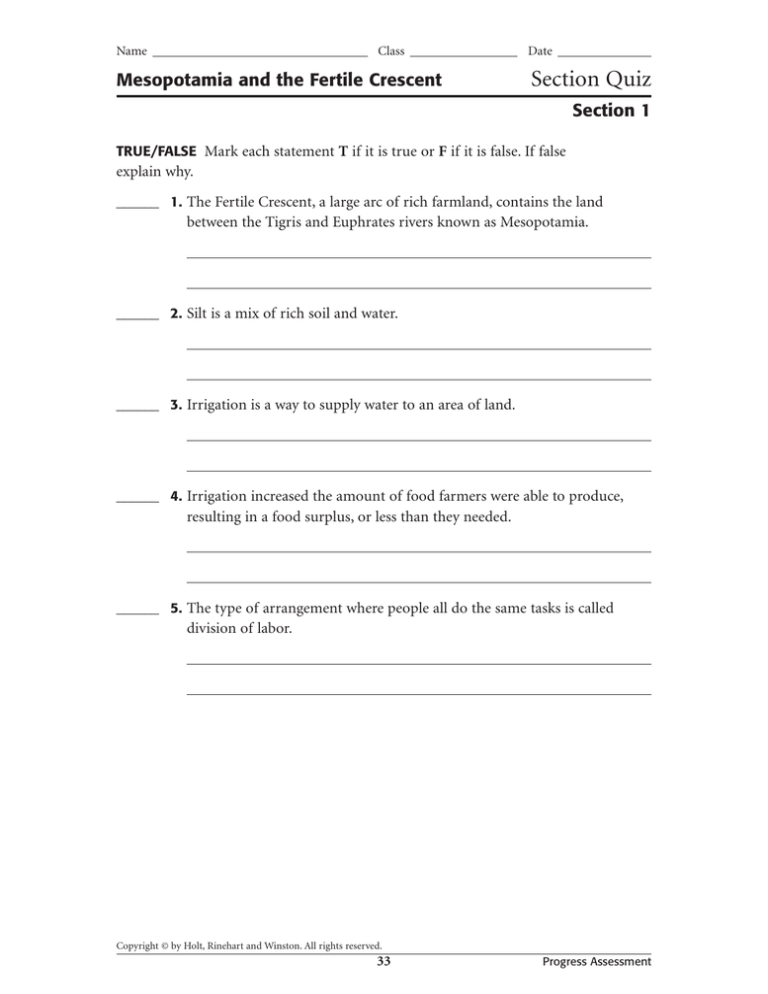
Name
Class
Mesopotamia and the Fertile Crescent
Date
Section Quiz
Section 1
TRUE/FALSE Mark each statement T if it is true or F if it is false. If false
explain why.
______ 1. The Fertile Crescent, a large arc of rich farmland, contains the land
between the Tigris and Euphrates rivers known as Mesopotamia.
______ 2. Silt is a mix of rich soil and water.
______ 3. Irrigation is a way to supply water to an area of land.
______ 4. Irrigation increased the amount of food farmers were able to produce,
resulting in a food surplus, or less than they needed.
______ 5. The type of arrangement where people all do the same tasks is called
division of labor.
Copyright © by Holt, Rinehart and Winston. All rights reserved.
33
Progress Assessment
Answer Key
COMPLETION
20.
21.
22.
23.
24.
25.
26.
27.
28.
29.
settle in one spot for an extended period
of time.
8. Farming allowed people to begin
controlling their food production. As a
result, small communities grew into towns
in which people worked together to raise
crops and animals. They also gathered for
religious functions.
values
artifacts
climates
location
god
anthropologists
choppers
Stone
Antarctica
farm
PRACTICING SOCIAL STUDIES SKILLS
9. Early humans reached North America
from Asia by walking across land that is
covered by water now.
TRUE/FALSE
30.
31.
32.
33.
T
F
F
F
34.
35.
36.
37.
T
F
T
T
Mesopotamia and the
Fertile Crescent
SECTION QUIZ
MATCHING
38.
39.
40.
41.
42.
43.
44.
f
h
k
b
n
i
p
45.
46.
47.
48.
49.
50.
c
a
m
j
l
e
SECTION 1
1.
2.
3.
4.
5.
SECTION 2
UNIT TEST FORM B
1.
2.
3.
4.
5.
6.
7.
8.
9.
10.
SHORT ANSWER
1. Historians are mainly concerned with
2.
3.
4.
5.
6.
7.
T
F, (tiny rocks and water)
T
F, more than they needed
F, division of labor exists when individuals
specialize in different tasks
human activity in the past. They want to
know how people lived and why they did
what they did.
I can learn more about myself, others, and
the world.
People use fossils, artifacts, and primary
and secondary sources.
Climate affects plant life as well as
landforms.
Geography affects resources and cultures
and influences history.
People now lived all around the world
and had to learn to use animal skins for
clothing, to invent tools to fish and bow
and arrows to hunt, and to make canoes
for travel.
People learned how to plant their own
seeds to produce food. They no longer had
to follow animal herds and were able to
h, rural
b, city-state
m, urban
c, empire
k, Sumerians
e, polytheism
f, priest
j, social hierarchy
g, religion
i, Sargon
SECTION 3
1.
2.
3.
4.
5.
6.
7.
8.
9.
10.
cuneiform
pictographs
scribe
epics
architecture
ziggurat
cylinder seals
The Epic of Gilgamesh
60
wheel
Copyright © by Holt, Rinehart and Winston. All rights reserved.
181
Progress Assessment


